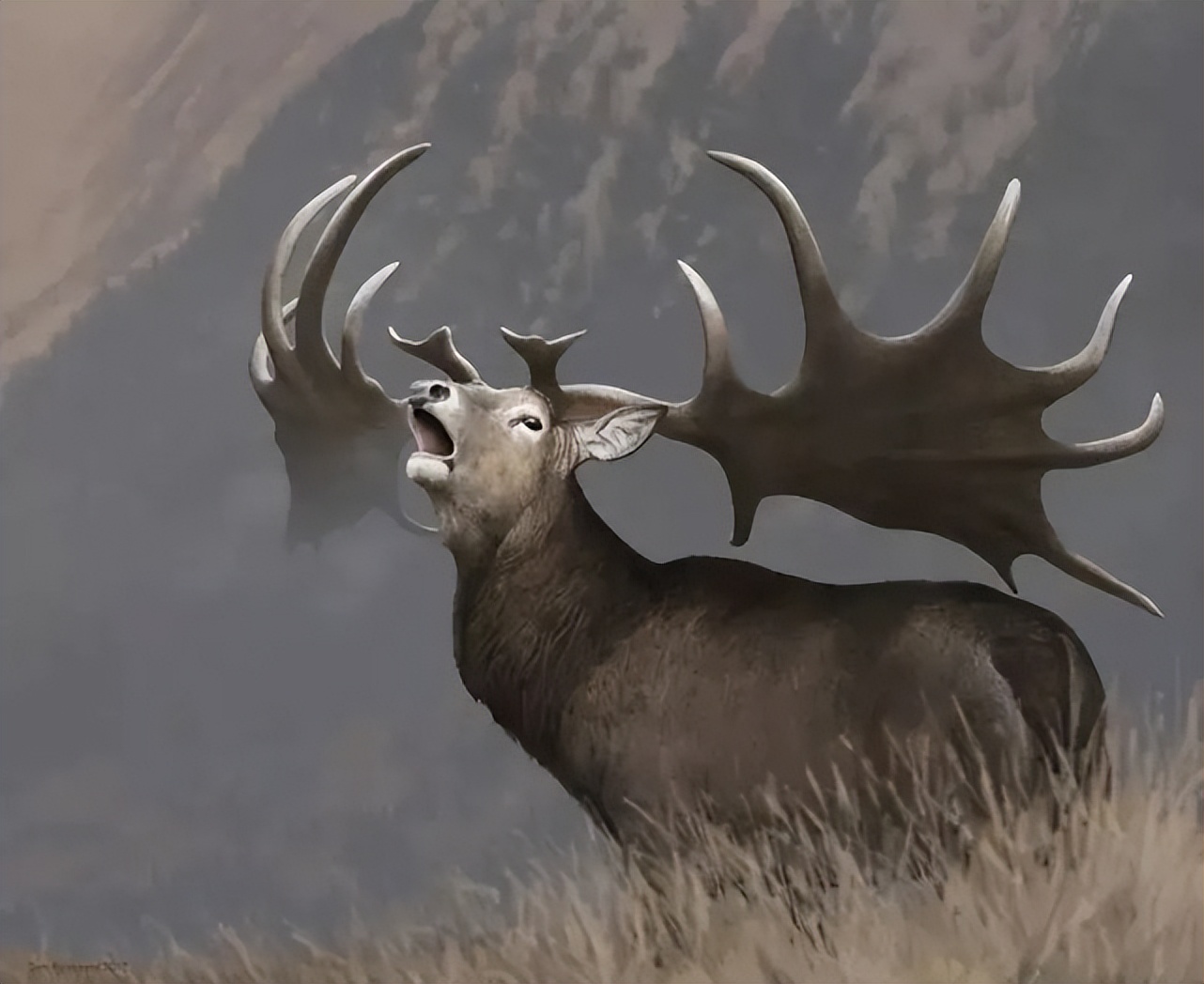The giant horned deer, also known as the bighorn deer, has a long face and a tall and stout body. The body length of the stag is about 2.5 meters, the height reaches more than 2 meters, their huge antlers weigh 45 kg, the plum branches and main branches of the antlers are expanded into a flat fan shape, radiating out several curved and sharp branches to the surrounding radial, the two horns can reach up to four meters at a distance of up to four meters, their heads, necks and shoulders have very developed muscles that can support heavy action, the giant horned deer are mainly distributed in Europe and northern Asia, they mainly live in open woodlands or aquatic and grass-rich lakes, not grassland animals, although their teeth are suitable for grazing, they are also herbivores.

Bighorn deer
Did the bighorn deer go extinct because they had huge horns?
It is thought that the horns of giant horned deer are too bulky, affecting their ability to move, and the annual replacement of antlers is also a huge physical burden, but recent studies have shown that the skeletal structure of giant horned deer shows that they have the ability to easily withstand their big horns to live, so the extinction of giant horned deer is not because the horns are too large, but because their cubs are too large when they are born, so female bighorn deer need to consume more energy to breed and raise their cubs.
Double-forked elk
The double-forked elk is a deer family that lived in the middle Pleistocene, About 2.3 meters in length, about 1 meter in shoulder height, so the coat color is very similar to modern elk, but in fact they are not the ancestors of modern elk, but only a branch of the evolution of the elk, because its horns are double-inserted, hence the name, double-forked elk tail is longer than the average deer family, can reach more than 4.cm, estimated to be used to repel mosquitoes, this animal likes to be near the swamp, because there is abundant water and abundant plants to eat, they move in groups, each group will be about 30 members, the leader is usually male, the leader is responsible for the diet of the deer, if encountered drought They are also responsible for leading the deer to migrate to places where there is water, they are very homesick, if the drought has passed, they will have to return to the place where they used to live, and if they encounter enemy tracking, the double-forked elk has a life-saving way, that is, to integrate into other large plant-eating animal groups, such as elephant herds.
Oddhorn deer
Oddhorn deer prefer to live in small flocks in the mountains. It lived in the Miocene of North America. Eventually extinct in the Early Pleistocene. Due to living in mountainous environments, fossils are less preserved, mainly some skulls. Not too closely related to modern deer, its face is relatively narrow and long, which helps to find predators, their tooth crown is higher, can grind harder plants, indicating that they are real herbivores, but the forelimbs retain four toes instead of two toes, and the males also have large canine teeth, which are more primitive features. The nose has two long horns, because the bone nose horn contains nerves and blood vessels, fragile and easy to break, not as strong as solid cattle horns, deer horns and rhino horns, it is difficult to use as a weapon against predators, and it is more likely to be a tool for courtship and show off between the same kind